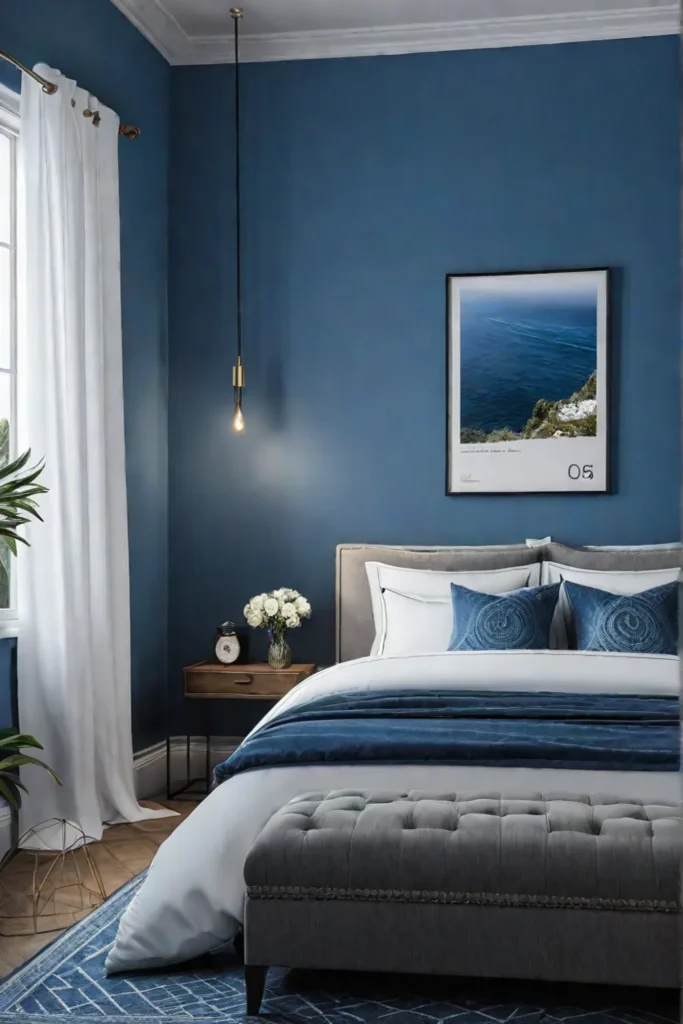Minimalist bedroom color palettes, by their very nature, are a strategic tapestry woven with understated hues that create an environment conducive to relaxation and peace. These palettes aren’t just about a lack of color; they are carefully curated schemes that leverage the psychology of color to evoke a sense of calm and order.

This article delves into the captivating world of minimalist bedroom color palettes, exploring their inherent appeal, popular combinations, and practical tips for creating a haven of tranquility in your own space.
Why Choose a Minimalist Color Palette?
A minimalist color palette is more than just a trend; it’s a deliberate choice that offers numerous psychological and practical benefits.
- Promotes Relaxation: Minimalist palettes often feature serene, muted tones like pastels and neutrals, which have a calming effect on the mind and induce a sense of tranquility.
- Enhances Focus: The absence of bold, competing colors minimizes visual distraction, allowing for better concentration and promoting mental clarity.
- Creates a Sense of Spaciousness: Light, neutral shades reflect light, making the room appear larger and airier, even in compact spaces.
- Allows Furniture to Shine: A neutral backdrop elevates the beauty and craftsmanship of your furniture pieces, allowing them to stand out as focal points.
- Evolves with Your Style: Minimalist palettes are incredibly adaptable and can easily transition with changing trends, making them a long-lasting investment.
Popular Minimalist Bedroom Color Combinations:
1. Whites and Greys:
This timeless combination exudes a sense of sophistication and purity. Incorporate different shades of white and grey to add depth and dimension.
- Ivory and Charcoal: Creamy ivory walls with charcoal accents create a warm, inviting atmosphere.
- Snow White and Slate Grey: This crisp combination offers a modern, minimalist feel that is clean and refreshing.
2. Earth Tones and Neutrals:
Connecting with the earth, these warm, grounding tones create a cozy and serene ambiance.
- Sage Green and Taupe: This combination evokes the tranquility of nature, bringing a sense of calmness and peace.
- Warm Beige and Dusty Rose: This soft and romantic palette feels inviting and creates a warm, intimate space.
3. Soft Pastels:
These gentle hues soothe the senses and promote a sense of relaxation.
- Light Blue and Pink: These delicate colors create a whimsical and airy atmosphere, perfect for a tranquil sleep.
- Lavender and Mint Green: This calming pairing evokes a sense of peace and tranquility, promoting restful sleep.
4. Monochromatic Schemes:
Playing with different shades of a single color creates a harmonious and sophisticated look.
- Shades of Blue: From light cerulean to deep navy, a monochromatic blue palette creates a serene and calming atmosphere.
- Shades of Green: From pale olive to emerald green, a monochromatic green palette exudes a sense of nature and tranquility.
Tips for Creating a Minimalist Bedroom Color Palette:
- Consider the size of your room: Lighter colors tend to make smaller rooms appear larger, while darker shades can create a cozy atmosphere in larger rooms.
- Think about the natural light: If your room has ample natural light, you can experiment with bolder colors. However, if your room is naturally darker, stick to lighter shades to brighten the space.
- Choose a focal point: Select a feature wall, a statement headboard, or a piece of art to be the centerpiece of your room and coordinate your color palette around it.
- Add texture and dimension: Incorporate various textures like linen, velvet, and wood to add visual interest to your minimalist palette.
- Don’t be afraid to experiment: Play around with different combinations and shades until you find a palette that you love and that reflects your personal style.
FAQ:
What are some trends in minimalist bedroom color palettes?
- Currently, popular minimalist bedroom colors include soft sage green, warm beige, muted terracotta, gentle blush pink, and serene blues.
How can I add a pop of color to a minimalist bedroom?
- Incorporate pops of color through accent pieces like throw pillows, a blanket, or artwork. Choose a shade that complements your primary palette and is in line with your personal aesthetic.
What kind of lighting is best for a minimalist bedroom?
- Opt for soft, diffused lighting rather than harsh overhead lights. Consider using lamps, sconces, and string lights to create a warm and inviting ambiance.
Conclusion
A minimalist bedroom color palette offers a haven of tranquility, inviting you to unwind and escape the stresses of daily life. By embracing understated hues, you create a space that is both aesthetically pleasing and conducive to rest and rejuvenation.
Remember, the key to a successful minimalist color scheme is to choose colors that resonate with you and reflect your personal style. Carefully curated color palettes can transform your bedroom into a serene sanctuary where you can truly recharge and revitalize.
Closure
Thus, we hope this article has provided valuable insights into Minimalist bedroom color palettes. We thank you for taking the time to read this article. See you in our next article!